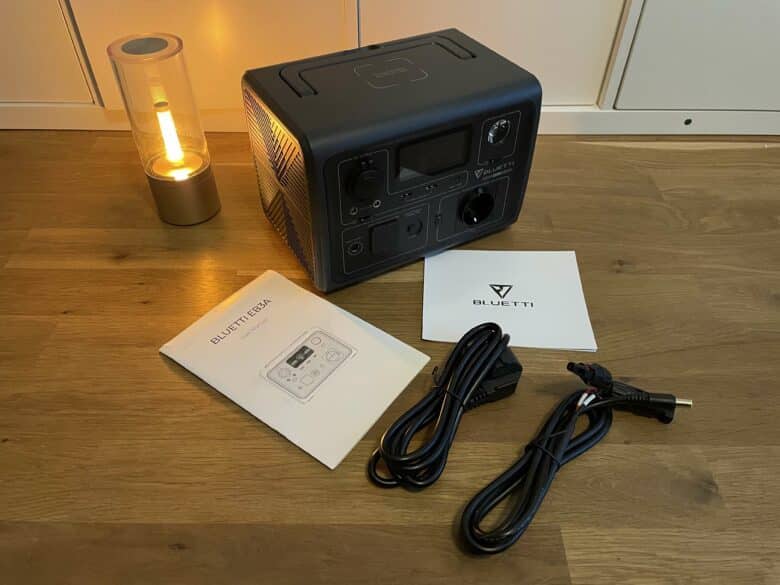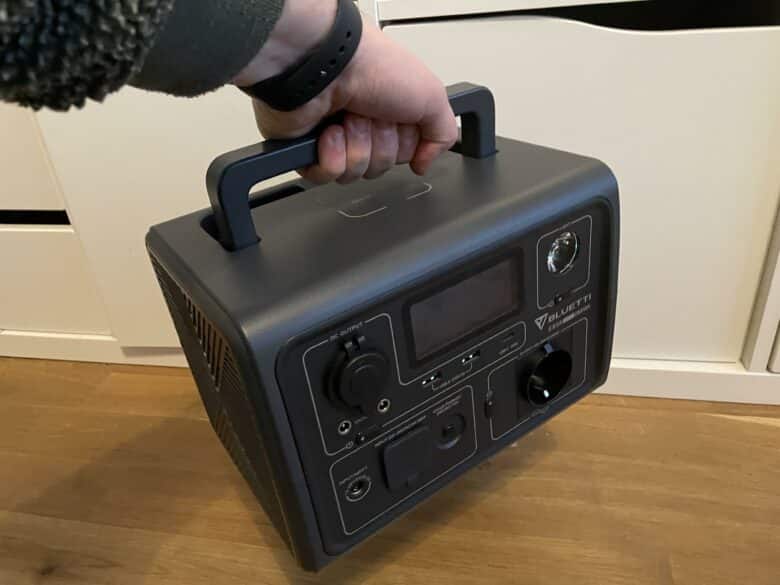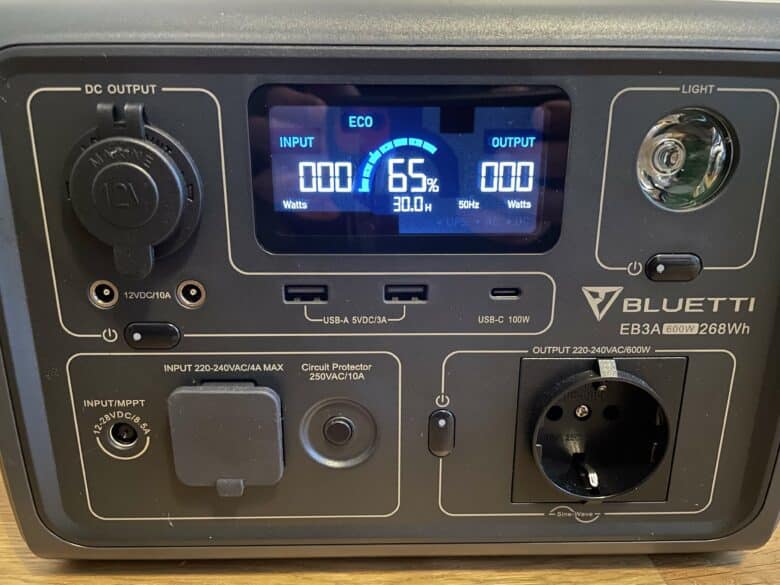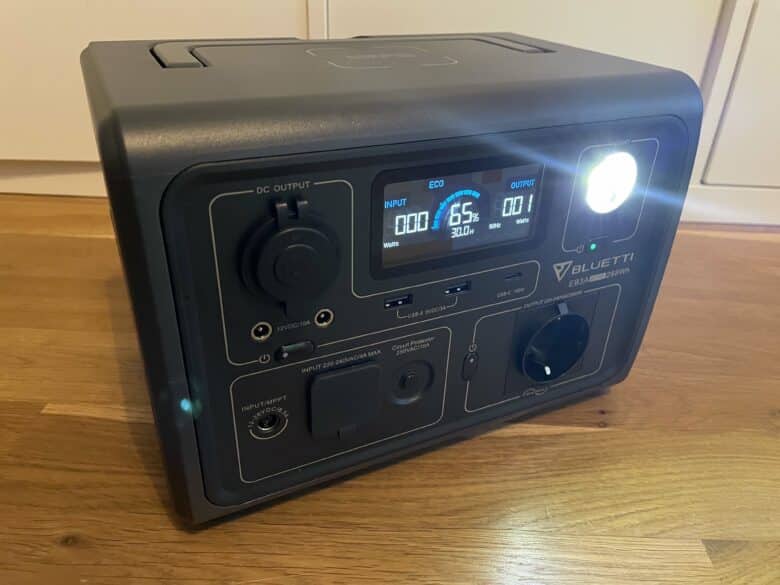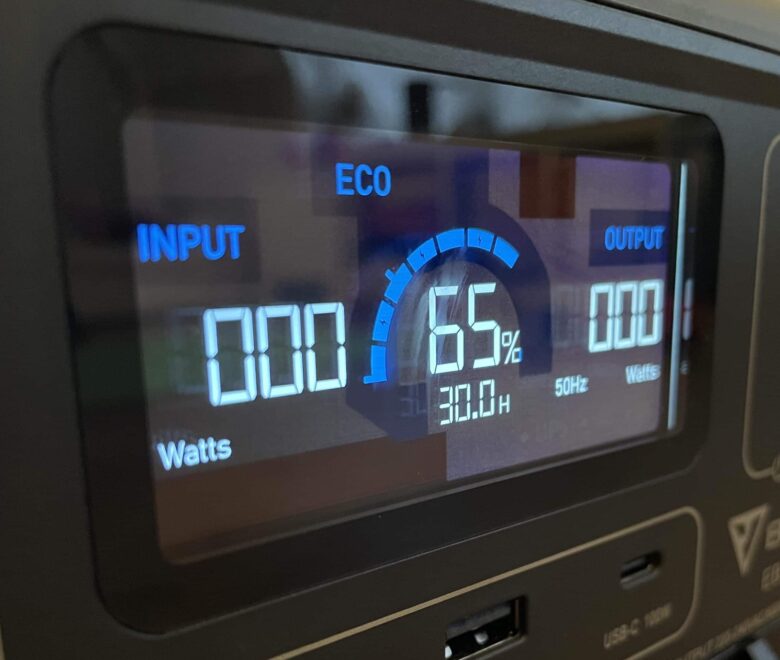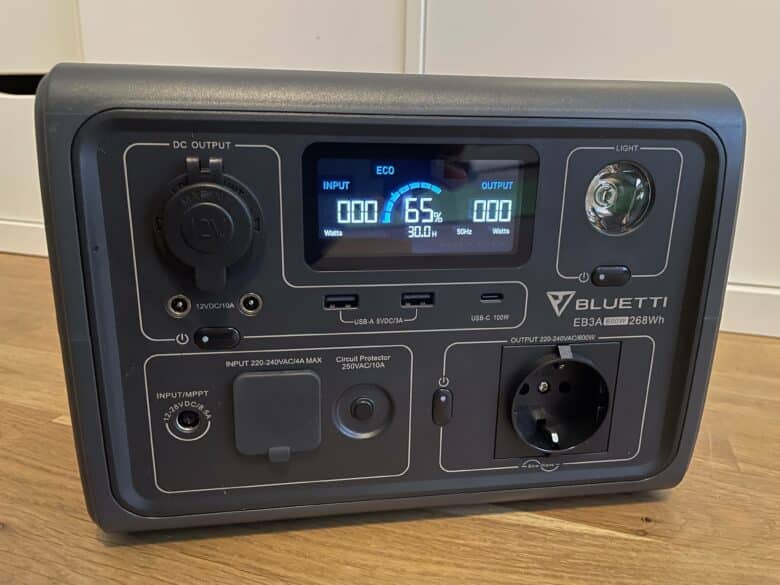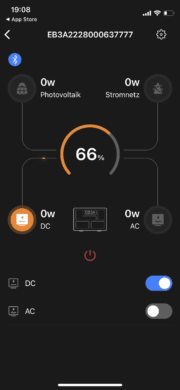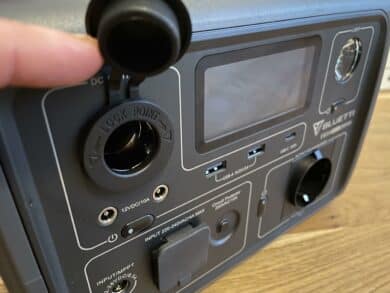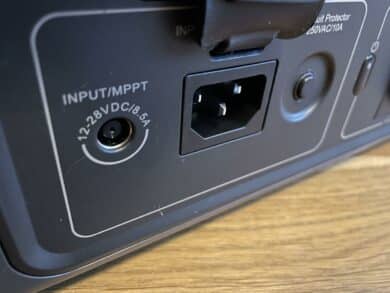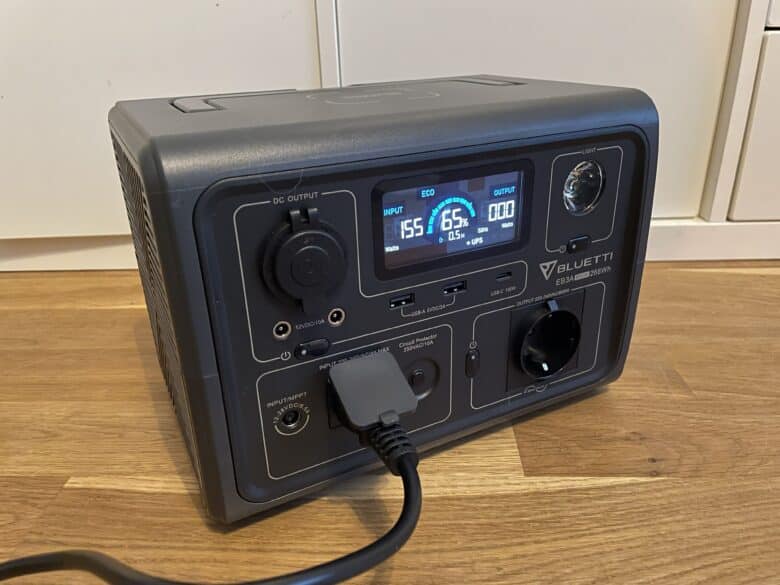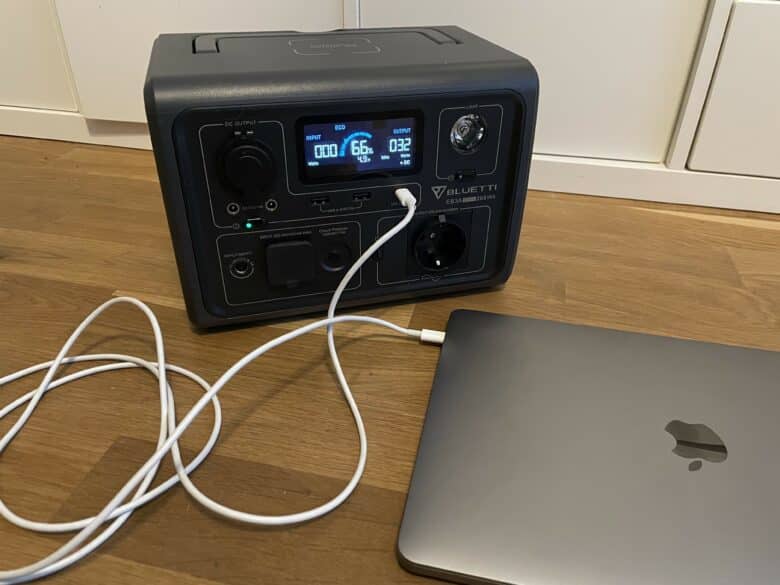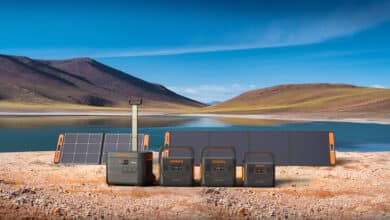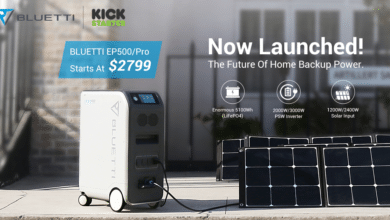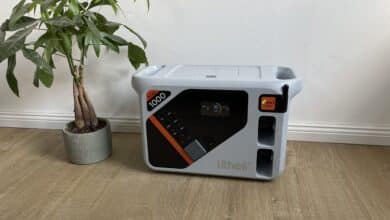
Power stations are becoming increasingly popular. This is certainly also due to the fact that these practical energy storage devices are now available in all conceivable sizes. From the large power station, which can supply your entire household with emergency power in an emergency, to medium-sized solutions for modern van life, to the handy portable energy storage unit, there is something for every taste and need. Today, we want to take a closer look at a model that is definitely one of the smallest on the market. In the Bluetti EB3A review, we’ll take a look at a power station that offers comparatively little battery capacity, but can be carried from A to B comfortably. And it can even be carried in a backpack. Is this possibly the perfect power station for camping, hiking and the next festival?
Technical data
| Battery capacity | 268 Wh |
| Continuous power | 600 W |
| peak power | 1,200 W |
| Charge power (AC) | Silent (100 watts), Standard (268 watts), Turbo (330 watts) |
| Charge power (solar) | 200 watts |
| Connections | 1x Schuko socket, 2x DC-In, Qi charging surface, 1x 12 V car in/out, 100 W USB-C, 2x USB-A (5 V, 3 A), DC-In, AC-In (mains plug), |
| Dimensions and weight | 255 x 180 x 183 mm and 4.6 kg |
| Price | € 39.79 * |



Bluetti EB3A review: scope of delivery
A look inside the package not only reveals the EB3A itself. On top of that, Bluetti immediately encloses the matching cables. In addition to the power cord for connection to the household outlet, you’ll also find a solar charging cable. Of course, the user manual is also included. To top it all off, I would have liked to see a small transport bag for the cables.
Bluetti EB3A review: growth in the mini power station segment
- Compact design
- 268 Wh battery capacity
- 4.6 kg light
When it comes to design, Bluetti isn’t reinventing the wheel with the EB3A either. After we were already allowed to put some power stations under the microscope as part of our test series, we could also quickly assign the energy storage in mini format to the category. The manufacturer doesn’t let itself be hidden either. After all, the EB3A looks like a smaller version of the Bluetti EB55. However, while the latter offers a battery capacity of 537 Wh, our review sample only comes with just under 268 Wh. However, it still offers significantly more battery capacity than the Flashfish E200 (test), which is more of a mix between a powerbank and a powerstation with 151 Wh.
It is already clear from the carrying handle that the EB3A likes to be moved. Thanks to the pleasant weight of 4.6 kg, this is also possible without any problems. One of the toughest competitors is not without reason the Jackery Explorer 240 (test), which comes along with almost the identical capacity. However, with a weight of just 3 kg, this one offers a clear advantage in carrying comfort. However, this also has its downsides. While Jackery relies on lightweight lithium-ion batteries, the small Bluetti uses safe and durable LiFePO4 battery cells. However, these weigh more, which is due to a lower energy density.
Bluetti EB3A test: there’s room for them everywhere
- Dimensions: 25.5 cm x 18 cm, 18.3 cm
- Fits even in travel backpack
- Practical carrying handle
In addition to the weight, the dimensions of the power station also play a major role, of course. The Bluetti EB3A measures 25.5 cm x 18 cm, 18.3 cm. So it hardly takes up any space in your car, which should please any camper. And it gets even better. After all, the power station is so compact that you can even put it in your travel backpack. This is an ideal option for hiking trips in particular. If you plan to strap the mobile energy storage device on your back, it is of course important that your backpack is not too small.
With the mobile design, of course, a carrying handle must not be missing. And unlike the Jackery Explorer 240 or the Explorer 500 (test), this one is not rigid, but can be folded in. That’s not only an advantage when you’re packing your car. On top of that, the power station can also be used as a storage unit this way. However, the handle left a slightly sour taste in our mouth. Finally, its build quality falls a bit in direct comparison to the rest of the power station. The Jackery Explorer 1000 Pro (test), for example, is clearly ahead here. Still, it does what it’s supposed to.
Bluetti EB3A test: many connections
- Comparatively many ports
- Qi charging area on the top
- Continuous power of 600 watts, peak power of 1,200 watts
In direct comparison to the Jackery Explorer 240, the Bluetti EB3A scores especially in the important discipline of connectivity. Here, the small power station is more on a par with the much larger Explorer 500. Before we get to the other connections, I would like to start with my highlight. This is on the top of the power station. Bluetti uses a Qi charging surface that allows you to charge your smartphone comfortably. Neither the Jackery Explorer 240 nor the 500 can score with such a charging surface.
The remaining ports are located on the front of the compact powerstation. As is the case with many powerstations, you can also enable the individual output types in the form of AC, DC and USB at the touch of a button. As an AC output, the EB3A offers a classic Schuko socket with 230 volts. This is capable of a continuous output of 600 watts. In terms of DC, you’ll again find a 12 V car port on the front, as well as two DC5521 ports, which also have 12 V.
Of course, USB should not be missing either. In addition to two classic USB-A ports, the handy energy storage device also offers a USB-C port that provides a whopping 100 W and can thus also quickly charge larger devices like your notebook. Of course, the obligatory flashlight on the front is also a practical goodie. This way, the small power station can also be used as a suitable light source during a camping trip. This offers two different brightness levels and also an SOS mode.
Bluetti EB3A Test: Battery is small but durable
- LiFePO4 battery cells promise safety and longevity
- After 2,500 charge cycles, still 80 percent residual capacity
A 268 Wh battery slumbers under the hood of the small power station. Thus, it offers significantly less capacity than many other energy storage devices. You should keep that in mind if you are thinking about getting the Bluetti EB3A. In general, you should deal with the issue in advance. It is not only a question of whether battery capacity or portability is more important. You also have to ask yourself which battery type you prefer. Bluetti relies on lithium iron phosphate cells (LiFePO4) for its compact power station.
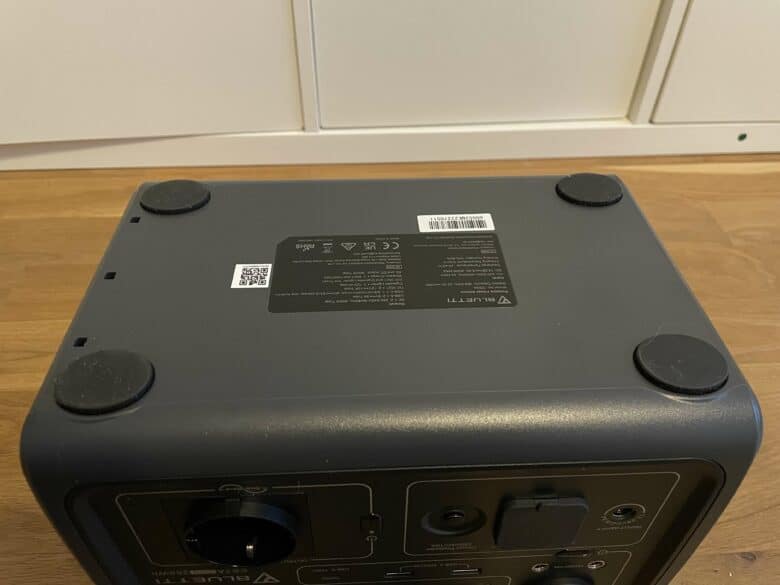
This battery technology results in a lower energy density than is the case with lithium-ion batteries. This also ensures that lithium-ion powerstations with a similar battery capacity weigh less. But that’s actually it with the practical advantages. LiFePO4 technology is characterized by more safety and longevity. Especially if you like to carry the Powerstation with you, this battery technology offers reliable protection against the consequences of bumps or even falls.

Also, keep in mind that the low capacity also means you’ll need to charge the Powerstation’s battery more often than you would a larger one. Since LiFePO4 battery cells can endure more charging cycles, you will also enjoy the device longer. This is not only good for the wallet, but also commendable from an ecological point of view. By the way, according to Bluetti, the EB3A should only show a reduced maximum battery capacity of 80 percent after 2,500 charge cycles. This is a very good value and promises many years of enjoyment.
Bluetti EB3A test: user comfort
- Overviewable display
- Overview and operation with Bluetti app
- Conditional weather protection
After we have clarified the technical requirements, we want to put our focus on the everyday usability. The main focus here is on user-friendliness. Only if a power station can be operated easily and self-explanatory, it is also equipped for everyday use.
Display
Bluetti also gives its mini power station a display. This measures 8 cm in diagonal. It may be small, but it displays the most important information. You can not only read the remaining battery capacity here. You can also check how much power the battery is currently delivering (output) or consuming (input). The latter is especially interesting when you charge the EB3A with the help of a solar panel. By the way, the output does not only include the connected loads. The EB3A also accounts for the power consumption of the fan and display, for example. The small power station does not offer a separate switch for the display itself. Rather, it turns on automatically when you turn on the DC or AC ports.
In Eco mode, the screen turns itself off after a few seconds, which is supposed to ensure low energy consumption. This makes sense insofar as the already comparatively small battery is not unnecessarily burdened. Even though the display has a modern look, touch control is not possible. However, since this is an energy storage device that will primarily be used on the go, I find this to be more of an advantage. After all, the EB3A can thus also be operated with gloves without any problems.
By the way, unlike the Flashfish E200, for example, Bluetti relies on a percentage display of the remaining battery capacity here. This lets the user estimate far better how much remaining battery is still available. But you don’t actually have to guess how long the power station will last. After all, the screen also shows how long it will take until the EB3A is completely empty, assuming the output power remains the same. Conversely, it tells you how long it will take until the power station is fully charged at constant power. In addition, you can read here which outputs are currently outputting power. Thus, the display is on par with larger powerstations. It was always very easy to recognize in the test.
Bluetti app
You can ensure the maximum in terms of user comfort when you use the EB3A in combination with the in-house Bluetti app. A big advantage of the app is already clear during setup. You don’t need an account to use the application’s features to the full extent. You can therefore keep your data to yourself. Once the app is installed, a connection between the smartphone and the power station can be established in a flash via Bluetooth. The core task of the app is certainly the control function.
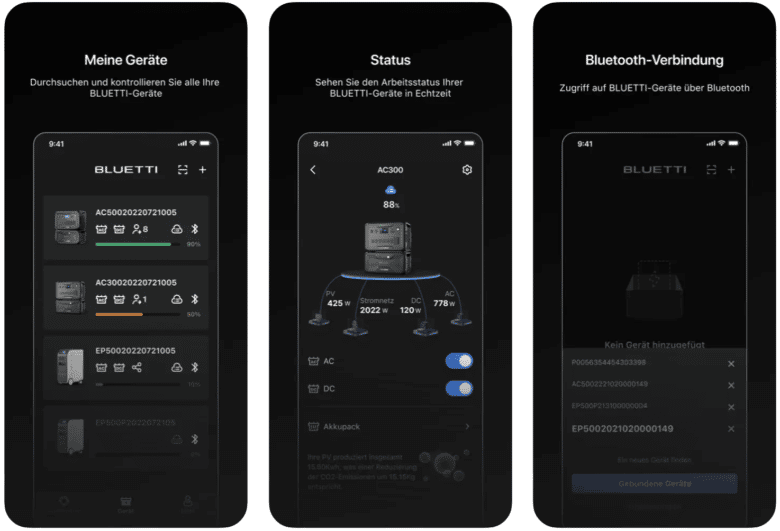
Here, in a sense, you can view the data on your smartphone, which can also be read on the display of the power station. But not only that. The EB3A can also be controlled remotely using the app. For example, you can enable the outputs. If you have permanently connected devices while camping, you can make them ready for use this way. You can also activate the eco mode here, which reduces the power consumption to a minimum.
Conversely, the maximum power of up to 1,200 watts can be activated. We really only know remote control on this scale from larger energy storage units. While monitoring and remote control are for convenience, the regular updates ensure longevity and performance. Bluetti promises that they also want to give the small power station firmware updates every now and then to keep it up to date and possibly fix bugs.
Weather protection only conditionally available
Some aspects are sometimes forgotten about energy storage devices when it comes to user comfort. For example, the volume during power output, but also intake. In normal operation, you can only hear the ventilation slightly. However, it looks different when the EB3A has to work a bit harder. Here you can observe or rather hear a systematic increase in volume. When I charged my MacBook via the USB-C port with 100 watts of power, I could hardly hear the power station at all.
It was a different story when I plugged in my drill. Generally, it can be said that the fans are only audible from a power consumption or output of 200 watts. This can sometimes be a bit annoying during charging. However, we can again refer to the app. It offers a practical sleep mode. You have to accept that the PowerStation charges a bit slower, but this should not be a problem for those who charge at night anyway.
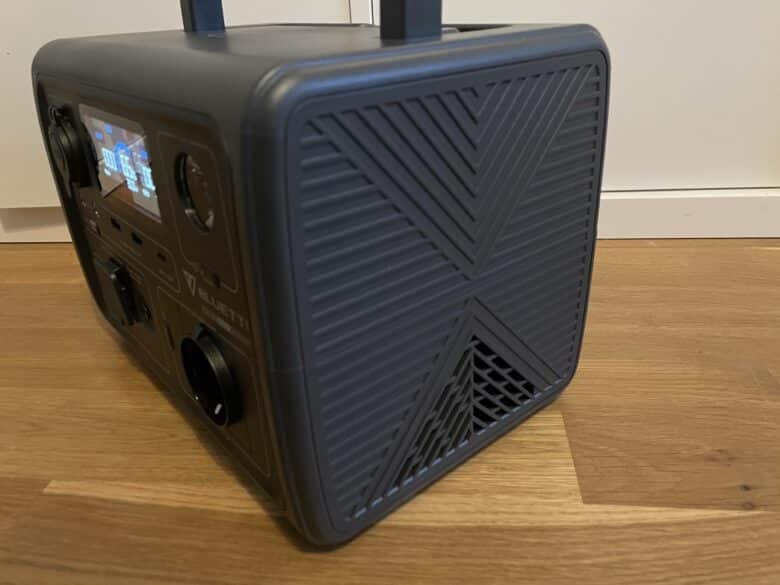
Given that the EB3A is so mobile, I would have liked to see a few more protections from bad weather from Bluetti. For example, there is only a suitable cover on the charging input and on the car connection. At least for the Schuko socket, I would have liked a cover as well. So if it should rain on the campsite once, the Bluetti is better off in your tent.
Bluetti EB3A test: charging
- Charging with the help of household outlet up to 330 watts (turbo mode)
- Charging with the help of solar up to 200 watts
In terms of output power, the small power station is quite big. But of course, the charging speed is also important. Finally, an energy storage with low battery capacity is also quite quickly empty again. With the EB3A you have a total of three ways to charge the battery. In addition to the classic charging via the household socket, you can also charge the power station via solar energy or the cigarette lighter of a car. While the cables for solar and household socket are included in the delivery, you have to take care of the car cable yourself.
When I plugged the small power station into my household outlet, I was amazed. After all, the input power skyrocketed to 260 watts. But there’s more to it than that. In the app, you can choose between three different charging modes. Besides the standard mode, which allows up to 268 watts, there is also the silent mode (max. 100 watts) and the turbo mode (max. 330 watts). The former is interesting for all those who want to keep the fan noise as low as possible. Turbo mode, on the other hand, should only be used in exceptional cases in my opinion. It is true that the battery can be fully charged within just 50 minutes here. However, this is in no way beneficial for the battery cells’ longevity. I personally think that the standard mode is completely sufficient. Here, the Powerstation needs about 1:25 h for a full charge.
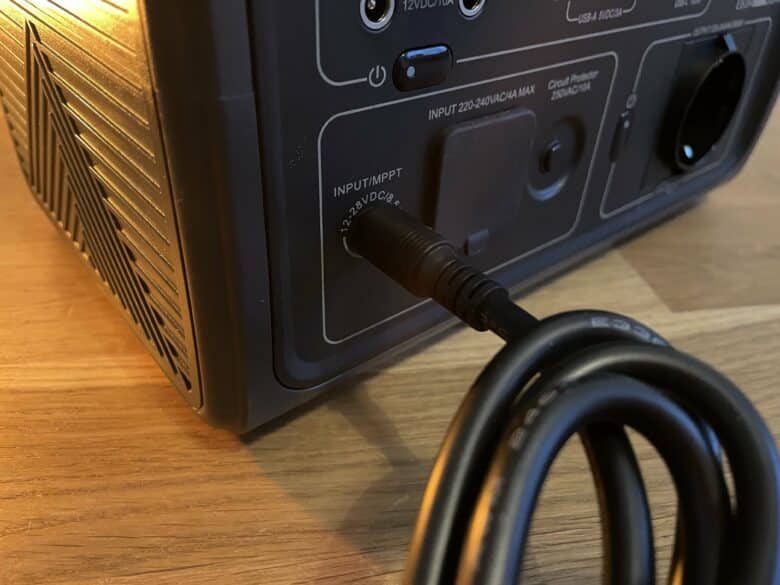
The small power station can also be charged with a solar panel. The EB3A comes with the appropriate connector as well as the right cable ex works. According to the manufacturer, up to 200 watts should be possible here. The mobile energy storage should then be fully charged within 1:20 hours. In view of the time of year, however, no representative test was possible for me. By the way, you can also charge in parallel via the socket and the solar input. Parallelism can also prevail for input and output power. The Bluetti offers passthrough charging, which allows you to charge and simultaneously supply connected devices with power. This is especially interesting when camping in combination with a solar panel.
Conclusion
The Bluetti EB3A is probably the best compact power station we’ve had the pleasure of reviewing so far in our series of tests. And that’s mainly because, despite its compact dimensions, it brings along advantages that are actually only offered by the larger energy storage units. In particular, the informative and very easy-to-read display completely convinced me. I also only know the connectivity from models that offer at least twice the capacity. The Qi charging area in particular should prove to be very convenient in practice. However, the hobbyhorse is and remains the manageability.
So the Powerstation not only fits in any trunk. On top of that, it is so small that it can easily fit in your hiking backpack. For on the road, it is therefore the optimal power provider. Thanks to its constant output power of 600 watts, it can easily handle multiple devices. Another highlight in my opinion is the use of a modern LiFePO4 battery. This ensures that the power station scores with an extra portion of longevity. If you’re looking for a handy, powerful and comparatively inexpensive power station, you’ve come to the right place.
Bluetti EB3A
Design and workmanship
Hardware
Performance
Value for money
92/100
If you are looking for a handy, powerful and comparatively cheap power station, this is the right choice.





